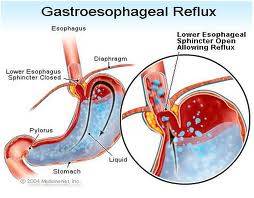Heartburn is a common symptom caused by acid regurgitating back up into the oesophagus from the stomach. The oesophagus is not designed to contain acid, which leads to the burning sensation of heartburn. This process is referred to as gastro-oesophageal reflux disease (GORD), reflux oesophagitis or reflux disease.


What causes GORD?
Normally, the lower part of the oesophagus contains specialised muscle fibres known as the lower oesophageal sphincter that act as a valve. This sphincter relaxes when we swallow food, but remains contracted at other times to prevent the acid that the stomach produces from entering the oesophagus.
When this mechanism does not work properly or is damaged, heartburn occurs.
Is GORD serious?
GORD can range from being mild with no long term consequences to causing severe symptoms. In the most serious cases, the lower oesophageal sphincter can be so damaged that acid is constantly in contact with the lower oesophagus. This can lead to permanent changes to the lining of the oesophagus known as Barrett’s Oesophagus. Continued damage to Barrett’s Oesophagus can progress to cancer.
How is GORD diagnosed?
The symptoms of GORD are usually enough to confirm the diagnosis, but additional tests are usually performed to assess the severity and possible complications of GORD. The most commonly performed tests include
- Barium swallow – a specialised x-ray test.
- Gastroscopy – the passage of a telescope into the oesophagus to visualise the oesophagus and stomach
- 24 hour pH testing – this is done to measure the severity of acidity in the oesophagus.
- Response to anti-reflux medications – improvement should be seen after two weeks treatment in GORD.
How is GORD treated?
Most cases of GORD can be managed by the combination of dietary and lifestyle changes as well as antacid medications. Ceasing smoking, weight loss, decreasing caffeine and alcohol intake and decreasing the size of meals are an important part of this.
When these simple interventions are unsuccessful or there is evidence of damage to the lower oesophagus, surgical treatment may be recommended.
The advances of keyhole (laparoscopic) surgery has made anti reflux surgery much more common than previously. The principles of anti reflux surgery involve wrapping part of the stomach around the lower oesophagus to strengthen the valve mechanism.
To learn more about reflux surgery, follow this link.
